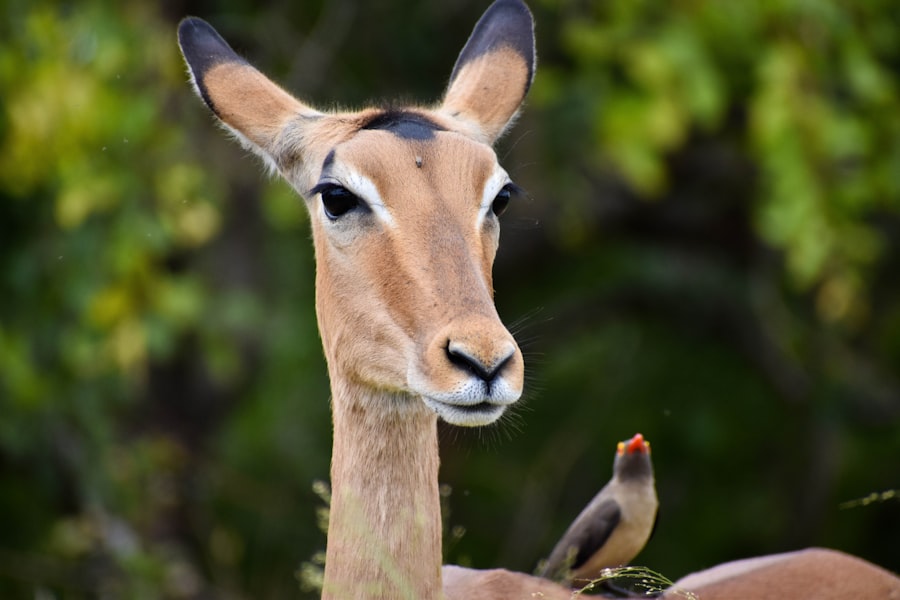South Sudan, located in East-Central Africa, is a country known for its rich cultural heritage and diverse population. It gained independence from Sudan in 2011, making it the youngest country in the world. With over 60 different ethnic groups, each with its own unique traditions and customs, South Sudan is a melting pot of cultures.
The cultural diversity in South Sudan is of great importance as it contributes to the country’s identity and national unity. It allows for the celebration and preservation of various traditions, languages, music, dance, art, and cuisine. The cultural heritage of South Sudan is a source of pride for its people and plays a vital role in shaping their collective identity.
Summary
- South Sudan is a diverse country with a rich culture that celebrates its traditions through music, dance, art, craft, cuisine, festivals, and family and community values.
- The history of South Sudan dates back to ancient kingdoms and has been marked by colonization, civil wars, and independence struggles.
- Traditional music and dance are an integral part of South Sudanese culture, reflecting the country’s ethnic diversity and social customs.
- The art and craft of South Sudan showcase the country’s heritage, with unique styles and techniques that vary across regions and communities.
- South Sudanese cuisine is a fusion of flavours and influences from neighbouring countries, with staple foods like sorghum, maize, and beans, and dishes like asida, bamia, and ful medames.
The History of South Sudan: From Ancient Kingdoms to Independence
The history of South Sudan dates back thousands of years, with evidence of ancient kingdoms and civilizations that once thrived in the region. The Kingdom of Kush, which existed from the 8th century BC to the 4th century AD, was one of the most powerful and influential kingdoms in Africa. It traded with Egypt and other civilizations along the Nile River.
In more recent history, South Sudan was part of Sudan under British colonial rule. After years of struggle and conflict, South Sudan gained independence from Sudan in 2011 following a referendum where the majority voted for secession. This marked a significant milestone for the people of South Sudan, who had long fought for self-determination and freedom.
Traditional Music and Dance: A Celebration of South Sudanese Culture
Traditional music and dance are integral parts of South Sudanese culture. They serve as a means of communication, storytelling, and celebration. Each ethnic group has its own unique styles and rhythms, often accompanied by traditional instruments such as drums, harps, flutes, and lyres.
Music and dance play an important role in various aspects of South Sudanese life, including weddings, funerals, initiation ceremonies, and harvest festivals. They bring people together, foster a sense of community, and provide a platform for self-expression and cultural preservation. Traditional music and dance are not only a source of entertainment but also a way to pass down traditions from one generation to the next.
The Art and Craft of South Sudan: A Window into Its Heritage
| Metrics | Data |
|---|---|
| Number of artworks | 50 |
| Number of artists | 10 |
| Exhibition duration | 2 months |
| Number of visitors | 500 |
| Number of workshops | 3 |
| Number of educational programs | 5 |
The art and craft of South Sudan are diverse and reflect the country’s rich cultural heritage. Traditional art forms include pottery, basket weaving, wood carving, beadwork, and body painting. These artistic expressions often have symbolic meanings and are used to decorate homes, clothing, and ceremonial objects.
Art and craft in South Sudan are not only decorative but also functional. For example, pottery is used for cooking and storing food, while basket weaving is used for carrying goods and as household items. The skills and techniques involved in these crafts have been passed down through generations, preserving the cultural heritage of the various ethnic groups in South Sudan.
The Cuisine of South Sudan: A Fusion of Flavours and Influences
South Sudanese cuisine is a fusion of flavours influenced by the country’s geographical location and neighbouring cultures. Staple foods include sorghum, millet, maize, rice, beans, and vegetables. Meat, particularly goat and chicken, is also commonly consumed.
The cuisine of South Sudan is characterized by its simplicity and use of natural ingredients. Dishes are often prepared using traditional cooking methods such as boiling, roasting, or steaming. Spices and herbs are used sparingly to enhance the natural flavours of the ingredients.
Influences from neighbouring countries such as Ethiopia, Uganda, Kenya, and Sudan can be seen in South Sudanese cuisine. For example, dishes like injera (a sourdough flatbread) and samosas (fried pastries filled with meat or vegetables) have become popular in South Sudan.
Festivals and Celebrations: A Showcase of South Sudanese Traditions

South Sudanese culture is rich in festivals and celebrations, which provide an opportunity for communities to come together and showcase their traditions. One of the most important festivals is the Dinka cattle camp, where young men take care of cattle and engage in traditional dances and rituals.
Other major celebrations include the New Year Festival, which marks the beginning of the agricultural season, and the Harvest Festival, which celebrates the bountiful harvest. These festivals are characterized by music, dance, feasting, and traditional ceremonies.
Festivals and celebrations play a significant role in South Sudanese culture as they reinforce social bonds, promote cultural identity, and provide a sense of belonging. They are also an important platform for passing down traditions and customs to younger generations.
The Importance of Family and Community in South Sudanese Culture
Family and community are at the core of South Sudanese culture. The extended family plays a crucial role in providing support, guidance, and protection to its members. It is common for several generations to live together under one roof, fostering a strong sense of kinship and unity.
In South Sudanese culture, respect for elders is highly valued. Elders are seen as a source of wisdom and guidance and are often consulted in matters of importance. The extended family system ensures that there is always someone to turn to in times of need or celebration.
Community is also highly valued in South Sudanese culture. People come together to help each other during times of hardship or celebration. This sense of community extends beyond immediate family members to include neighbours, friends, and even strangers.
The Role of Religion in South Sudan: Christianity, Islam and Traditional Beliefs
Religion plays a significant role in South Sudanese culture, with Christianity being the dominant religion followed by Islam and traditional beliefs. Christianity was introduced to South Sudan by missionaries during the colonial period and has since become deeply rooted in the country.
The majority of South Sudanese Christians belong to various Protestant denominations, with Catholicism also being practiced. Islam is predominantly followed by the Arab and Nubian communities in the northern parts of the country.
Traditional beliefs and practices, often referred to as animism, are still prevalent in some rural areas. These beliefs involve the worship of ancestral spirits and the belief in supernatural forces that influence daily life.
Religion provides a framework for moral values, social cohesion, and spiritual guidance in South Sudanese society. It plays a role in shaping people’s worldview, influencing their behaviour, and providing a sense of purpose and meaning.
The Challenges of Preserving South Sudan’s Cultural Heritage
Preserving South Sudan’s cultural heritage is not without its challenges. The country has faced decades of conflict, which has resulted in the displacement of communities, destruction of cultural sites, and loss of traditional knowledge and practices.
The rapid modernization and globalization also pose a threat to traditional cultures. Younger generations are increasingly exposed to Western influences through media, technology, and education, which can lead to the erosion of traditional values and practices.
Furthermore, the lack of resources and infrastructure for cultural preservation makes it difficult to document, protect, and promote South Sudan’s cultural heritage. There is a need for increased investment in cultural preservation initiatives, including the establishment of museums, cultural centres, and educational programs.
Exploring South Sudan’s Natural Beauty: From National Parks to the Nile River
South Sudan is blessed with abundant natural beauty, including vast savannahs, lush wetlands, and majestic rivers. The country is home to several national parks and wildlife reserves that offer opportunities for wildlife viewing, birdwatching, and eco-tourism.
Boma National Park is one of the largest protected areas in Africa and is known for its diverse wildlife, including elephants, giraffes, and antelopes. Nimule National Park, located along the border with Uganda, is a haven for bird enthusiasts, with over 300 species of birds.
The Nile River, the longest river in Africa, flows through South Sudan, providing opportunities for river cruises, fishing, and water sports. The Sudd, a vast wetland in South Sudan, is home to a rich variety of plant and animal species, including the endangered Nile lechwe.
South Sudan’s cultural heritage is a treasure that needs to be celebrated, preserved, and passed down to future generations. The country’s diverse population, rich history, traditional music and dance, art and craft, cuisine, festivals and celebrations, family and community values, religion, and natural beauty all contribute to its unique cultural identity.
It is important for individuals, communities, and the government to recognize the value of cultural preservation and take action to protect and promote South Sudan’s cultural heritage. This can be done through initiatives such as the establishment of museums and cultural centres, the documentation of traditional knowledge and practices, the promotion of cultural tourism, and the inclusion of cultural education in schools.
By supporting cultural preservation efforts in South Sudan, we can ensure that future generations have the opportunity to learn about and appreciate the rich diversity of this young nation. Let us celebrate South Sudan’s culture and work together to preserve its heritage for generations to come.
FAQs
What is South Sudan?
South Sudan is a country located in East-Central Africa. It gained independence from Sudan in 2011, making it the youngest country in the world.
What is the population of South Sudan?
As of 2021, the estimated population of South Sudan is around 11.3 million people.
What is the capital city of South Sudan?
The capital city of South Sudan is Juba.
What is the official language of South Sudan?
The official language of South Sudan is English, although there are over 60 indigenous languages spoken in the country.
What is the currency of South Sudan?
The currency of South Sudan is the South Sudanese pound (SSP).
What is the economy of South Sudan like?
South Sudan is one of the poorest countries in the world, with a largely agricultural economy. The country has significant oil reserves, but the ongoing conflict has hindered its ability to fully exploit this resource.
What is the current political situation in South Sudan?
South Sudan has been plagued by conflict since gaining independence in 2011. The country has experienced a civil war that began in 2013 and has resulted in the displacement of millions of people. In 2018, a peace agreement was signed between the government and opposition forces, but the situation remains fragile.
What are some of the major challenges facing South Sudan?
South Sudan faces a number of challenges, including ongoing conflict, food insecurity, and a lack of basic infrastructure such as roads and healthcare facilities. The country also has one of the highest maternal mortality rates in the world.


